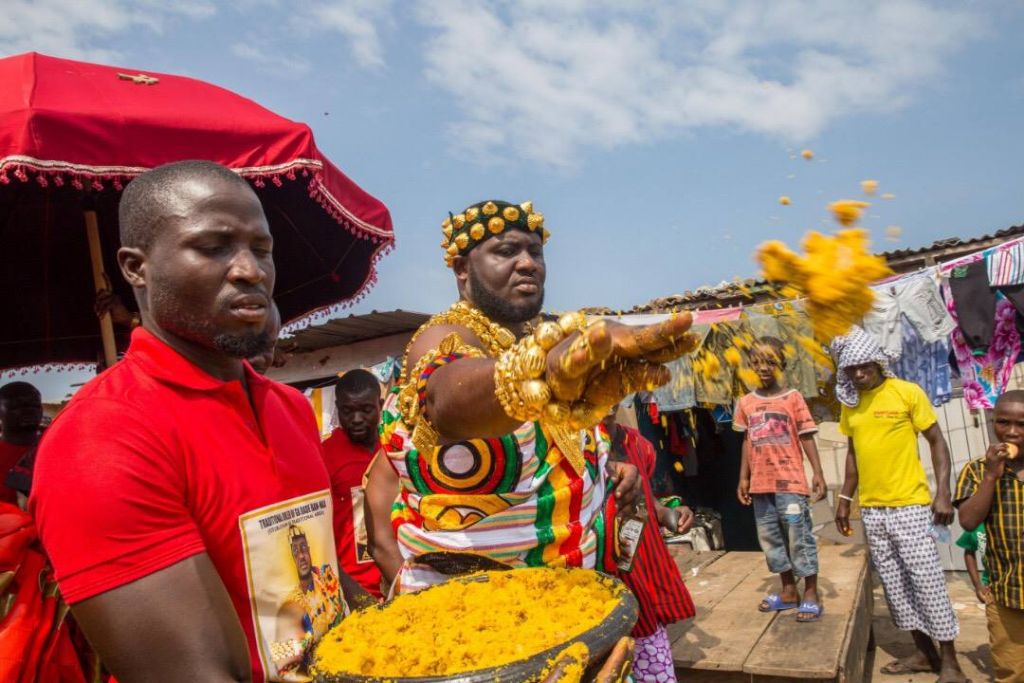
Homowo is one of the grandest festivals in Ghana and it happens right in the capital, Accra, every year in May. It’s history is one of a season of despair due to famine, which was eventually followed by a bumper harvest of plant food and fish, as such homowo – referring to the act of ‘hooting at hunger’. The chiefs of the Ga Traditional space sprinkle kpokpoi; a special dish prepared in the streets, made from cornmeal and palm oil. There is folk singing, libation pouring and litanies said to the gods for another sound season.
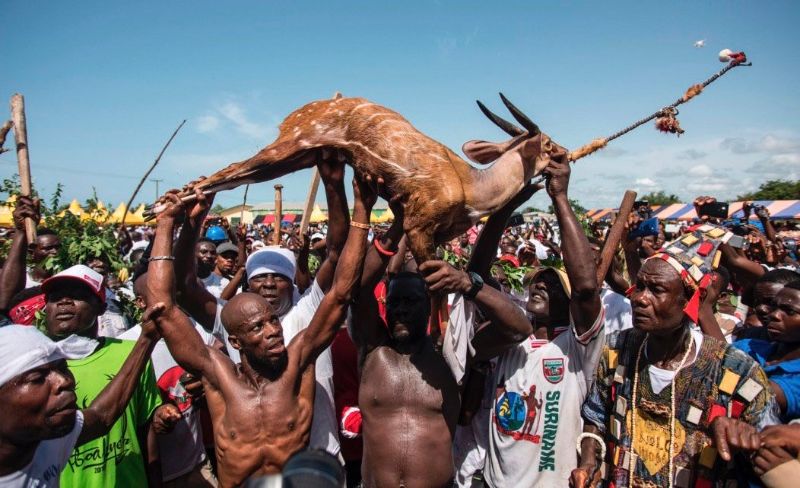
Effutu-Winneba people observe Aboakyir, literally meaning ‘game catching’, every first Saturday in the month of May. Two Asafo groups, Tuafo and Denkyefo, go on a procession into the forest for a competitive deer hunt (formerly a leopard hunt), after which rituals are done to pacify the gods. This is followed by a grand durbar with the chiefs, queen mothers and elders to vivify the ceremonial and cultural experience.
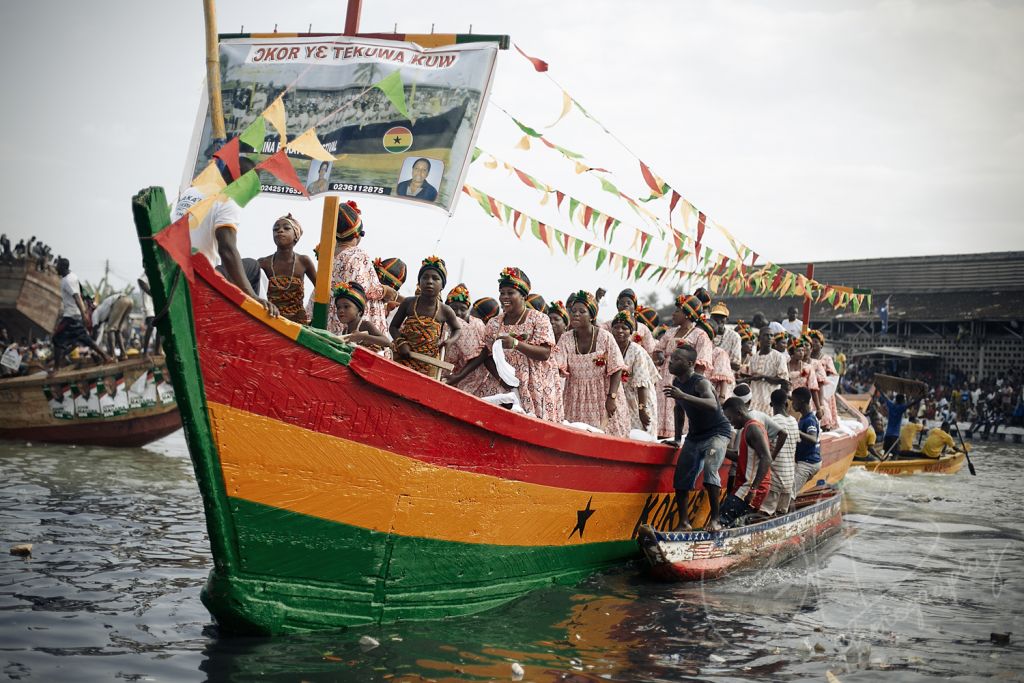
Bakatue, celebrated by the people of Elmina, symbolizes the ‘process of discharge’ as the Benya Lagoon becomes one with the sea to commence the fishing season. There are a lot of activities significant of honoring the deities – who are the agencies of reinforcement of the fishing community. One is the ‘net casting’ ceremony, where the catch is offered to the gods. It is celebrated annually in Elmina on the first Tuesday in July. A splashy durbar of chiefs and people amid drumming and dancing, as well as a hued display of canoes on the lagoon mark the celebrations.
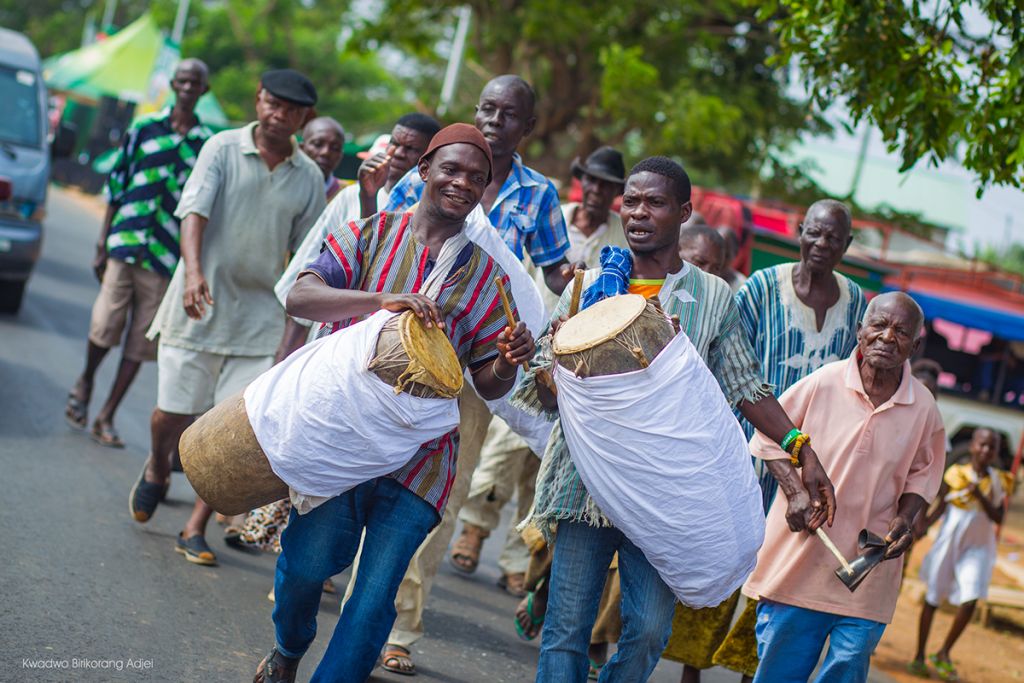
From the end of July to early August, the people of Ada in the eastern parts of the Greater Accra region commemorate victories and defeats in past clashes with Asafotufiam. Also, to usher in the harvest season, ceremonial formalities are observed. There is a mock battle performance with elegant costumes, stool cleansing rituals and libation, durbars amid processions with chiefs in palanquins, and music and dance involving men and women adorned in variegated beads.

Visit Fetu Afahye in early September in Cape Coast for the unique durbar and warrior group (asafo) processions. Ritual functions are observed such as libation and slaughter of livestock, to show appreciation to the 77 deities in the area. Just like in the Ga Traditional area, there is a ban on drumming, music and noise-making prior to the occasion. Also, fishing in the Fosu lagoon is paused. Alongside drumming and dancing by women, there are men and children clad in kente, gold ornaments and processions by chiefs and elders in palanquins bearing large umbrellas and scepters on the grand days. The Amuntumadeze (health day) and Adamma (rituals day) are also observed
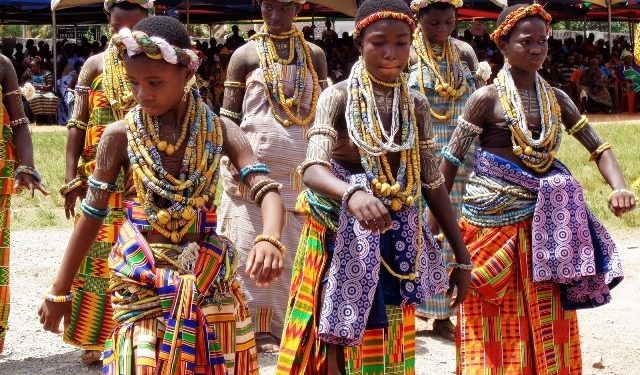
The Anlo Ewes escaped from the reign of terror by ruler Agorkoli to Notsie by walking backwards to evade their pursuers. To commemorate this exodus, Hogbetsotso is celebrated every September. It is also a peace-making opportunity to resolve qualms, aside stool purification and environmental sanitation exercises.
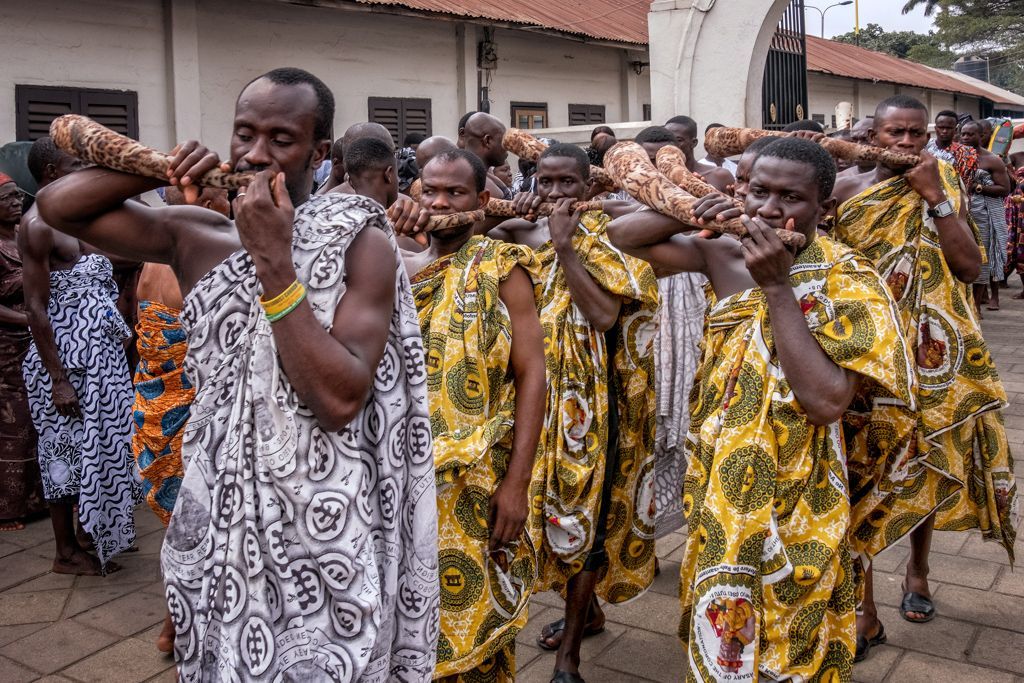
Manhyia Palace opens its doors to all and sundry during the special Sunday cultural experience called Akwasidae. The Ashanti kingdom boasts of intricately structured customs to strengthen the bonds among queen mothers, chiefs, sub-chiefs, elders and the people. The palanquin lift goes with horn sounds and fontomfrom thumps, and the kete or adowa dancing makes the colourfully adorned kente with gold trinkets an intriguing spectacle.
